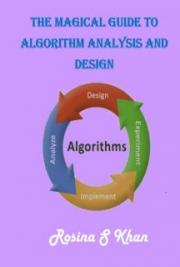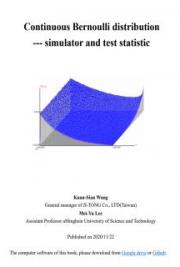Book
Continuous-time signal, 3, 29
outline, 16
Control conguration, 3, 375
purpose, 11
Control engineering, 1
Boolean
Controllability
actuator, 2
Gramian, 121, 125
algebra of subsets, 127
Control law, 5
sensor, 2
irrelevant specication, 10
Branch-and-bound, 21
specication, 7
Controller, 5
C
1-DOF, 37, 148, 155, 283, 286
CACSD, 10, 19
2-DOF, 39
Cancellation
adaptive, 30, 45, 215
unstable pole-zero, 152
assumptions, 29
Chebychev norm, 99
complexity, 8, 10
Circle theorem, 245
decentralized, 8
Classical
diagnostic output, 28
controller design, 5, 11, 18, 244, 378
digital, 19
optimization paradigm, 57
discrete-time, 2, 380
regulator, 34, 172
estimated-state feedback, 162, 282
Closed-loop
gain-scheduled, 30, 215
controller design, 11, 48, 135, 143,
2-optimal, 279
378
H
bound, 282
convex specication, 135
H
1
implementation, 5, 8, 19
design, 377
LQG-optimal, 5, 279
realizable transfer matrices, 147
LQR-optimal, 277
stability, 147, 150
minimum entropy, 282
stability, stable plant, 155
nonlinear, 30, 45, 246, 286, 381
system, 26
observer-based, 164
transfer matrices achieved by stabi-
open-loop stable, 268
lizing controllers, 154, 353
order, 10, 150
transfer matrix, 33
parameters, 150
Command
parametrization, 353
decoupling, 178
PD, 5, 14, 21
following, 183
PID, 5, 18, 353
input, 28
rapid prototyping, 19
interaction, 178
state-feedback, 277
signal, 28
state-space, 43
Comparing norms, 89, 117
structure, 353
Comparison sensitivity, 203
Controller design, 1
Complementary sensitivity transfer func-
analytic solution, 275
tion, 36
challenges, 10
Complexity
classical, 5, 11, 18, 378
bit, 346
convex problem, 351
controller, 9
empirical, 5
information based, 346
feasibility problem, 51, 335
quadratic programs, 346
goals, 6
Computing norms, 119
\modern", 5
Concave, 139
open vs. closed-loop, 135
INDEX
407
problem, 8, 11, 351
subgradient algorithm, 348
software, 19
upper and lower bounds, 315
state-space, 5
Convolution, 31
trial and error, 20
Crest factor, 91
Control processor, 1, 9, 19
Cutting-plane, 294
DSP chips, 19
algorithm, 313
power, 10
algorithm initialization, 349
Control system, 1
deep-cut, 294
1-DOF, 37, 283, 286
2-DOF, 39
2-DOF MAMS, 40, 202
D
architecture, 25
Damping ratio, 166
classical regulator, 34, 172
dB, 197
continuous-time, 3
Dead-zone nonlinearity, 229, 246
specications, 12, 47
Decentralized controller, 8
testing, 6
Decibel, 197
Control theory
Decoupling
classical, 5
asymptotic, 178
geometric, 45
exact, 180
optimal, 125, 275
Deep-cut, 294
state-space, 5
ellipsoid algorithm, 358
Convex
Descent
analysis, 293
direction, 297, 312
combination, 128
method, 312
controller design problem, 351
Describing function, 220, 246
denition for functional, 129
Design
denition for set, 128
closed-loop, 377
duality, 139
conservative, 210
functional, 128
FIR lters, 380
inner approximation, 207, 239, 262,
Pareto optimal, 55, 281, 337, 369
264
procedure, 63
optimization, 311
trial and error, 20
outer approximation, 267
Design specication, 11, 47
set, 128
achievable, 14, 50
supporting hyperplane for set, 298
as sets, 127
Convexity
boolean, 48
midpoint rule, 129
comparing, 49
multicriterion optimization, 139
consistent, 50
Pareto optimal, 139
families of, 51
performance space, 139
feasible, 50
Convex optimization, 11, 311
hardness, 51
-relaxed problem, 319, 329
inconsistent, 50
complexity, 345
infeasible, 50
cutting-plane algorithm, 313
nonconvex, 205
descent methods, 312
ordering, 49
duality, 292
qualitative, 49
ellipsoid algorithm, 324
quantitative, 54
linear program, 126, 271, 292, 313,
robust stability, 212
319, 348, 379
time domain, 134
quadratic program, 345, 378, 380
total ordering, 54
stopping criterion, 315
Diagnostic output, 28, 45
408
INDEX
Dierential sensitivity, 7, 195
stable transfer matrix, 169
versus robust stability, 210, 233, 244
Failure modes, 7, 45, 214
Digital
False intuition, 89, 108, 117, 379
controller, 19
Feasibility problem, 51, 312, 375
signal processing, 19, 380
families of, 51
Directional derivative, 297
RMS specication, 281, 335
Discrete-time
Feasibility tolerance, 319
plant, 380
Feasible design specications, 50
signal, 2, 29
Feedback
Disturbance, 6, 35
estimated-state, 162, 279, 282
modeling, 187
linearization, 30, 45
stochastic, 188, 194
output, 27
unknown-but-bounded, 190
paradigm, 46
Dual
perturbation, 221
functional, 61, 139, 332, 363
plant perturbations, 221
functional via LQG, 281
random, 114
objective functional, 61
state, 27
optimization problems, 142
well-posed, 32, 116
problem, 125, 362
Fictitious inputs, 25
Duality, 61, 139, 332, 362
Finite-dimensional approximation
convex optimization, 292
inner, 352
for LQG weight selection, 332
outer, 362
gap, 142
Finite element model, 19
innite-dimensional, 371
FIR, 380
lter design, 380
E
Fractional perturbation, 202
Ellipsoid, 121, 324
Frequency domain weights, 81, 188
Ellipsoid algorithm, 324
Functional
deep-cut, 358
ane, 128
initialization, 349
bandwidth, 189
Empirical model, 4
convex, 128
Entropy, 136, 282, 291
denition, 53
denition, 112
dual, 61, 139, 363
interpretation, 114
equality specication, 131, 137
state-space computation, 123
general response-time, 177
Envelope specication, 177, 193
inequality specication, 52, 131
Error
level curve, 250
model reference, 186
linear, 296
nulling paradigm, 46
maximum envelope violation, 177
signal, 34, 46, 69
objective, 54
tracking, 252
of a submatrix, 134
Estimated-state feedback, 162, 279, 282
overshoot, 173
controller, 282
quasiconcave, 189
Estimator gain, 162
quasiconvex, 132, 176, 189, 296
Exact decoupling, 180
relative overshoot, 173
Exogenous input, 25
relative undershoot, 173
response-time, 177
F
rise time, 175
Factorization
settling time, 175
polynomial transfer matrix, 169
subgradient of, 293
spectral, 92, 188
sub-level set, 131
INDEX
409
undershoot, 173
I
weighted-max, 62, 131, 139, 268
I/O specication, 172, 250
weighted-sum, 59, 131, 139, 281
Identication, 4, 10, 18, 215
Impulse response, 31, 96, 181, 305, 380
G
Inequality specication, 100
Gain, 94, 115, 231
Infeasible design specication, 50
average-absolute, 98, 111
Information based complexity, 346
cascade connection, 115
Inner approximation, 207, 239, 262, 264
feedback connection, 116
denition, 207
generalized margin, 238, 263
nite-dimensional, 352
margin, 215, 225, 236, 262
Input, 25
peak, 111
actuator, 25
scaling, 235
exogenous, 25
scheduling, 45
ctitious, 25
small gain theorem, 231
signal, 25
variation, 198
Input-output
Generalized
specication, 172, 250
bandwidth, 189
transfer function, 38
gain margin, 238
Integrated
response time, 189
actuators, 18
stability, 165, 232
sensors, 9, 18
Geometric control theory, 45
Interaction of commands, 178
Global
Interactive design, 63
optimization, 21, 345, 347
Internal model principle, 168
positioning system, 9, 18
Internal stability, 150
Goal programming, 63
free parameter representation, 156
Gramian
with stable plant, 155
controllability, 121, 125
Interpolation conditions, 155, 168, 284,
observability, 120, 123, 125
287
-stability, 165
Intuition
G
correct, 118, 140, 287, 362
false, 89, 108, 117, 379
H
ITAE norm, 84
2 norm, 276
H
subgradient, 301
J
2-optimal
Jerk norm, 83, 190
H
controller, 279
norm, 99, 282
H
L
1
bound and Lyapunov function, 245
shifted, 101
Laguerre functions, 370
subgradient, 303
Laplace transform, 30
Half-space, 294
Level curve, 250
Hamiltonian matrix, 121, 277, 282
Limit of performance, 12, 20, 139, 208,
Hankel norm, 103, 118, 121
347
Hardness, 51
Linear
History
fractional form, 150, 157
closed-loop design, 377
functional, 296
feedback control, 18, 208
program, 126, 271, 292, 313, 319,
stability, 169
348, 379
Hunting, 169
time-invariant system, 30
transformation, 81
Linearity consequence, 191, 193
410
INDEX
Linearly ordered specications, 132, 300
Multi-rate plants, 30, 381
Logarithmic sensitivity, 197
MAMS system, 202
Loop gain, 36
N
LQG, 13, 154, 278, 291
Neglected
multicriterion optimization, 280
nonlinearities, 219
optimal controller, 5, 279
plant dynamics, 213, 225, 234
LQG weights
Nepers, 197
selection, 332, 349
Nested family of specications, 132, 178,
trial and error, 350
300
tweaking, 281, 335
Noise, 6
via dual function, 350
white, 96, 106, 110, 193, 275, 278
LQR, 5, 275
Nominal plant, 211
LTI, 8, 28
Nominal value method for weights, 63
Lumped system, 29
Nonconvex
Lyapunov equation, 120, 123, 125, 271,
convex approximation for specica-
371
tion, 207
Lyapunov function, 125, 245
design specication, 205
specication, 205, 245
Noninferior specication, 55
M
MAMS system, 40
Nonlinear
logarithmic sensitivity, 202
controller, 30, 45, 246, 286, 381
Margin, 196
plant, 29, 45, 212, 219, 233, 381
Matrix
Nonlinearity
Hamiltonian, 121, 277, 282
dead-zone, 229
Schur form, 123, 277
describing function, 220
weight, 89, 278
memoryless, 231
Maximum absolute step, 118
neglected, 219
Maximum value method for weights, 63
Non-minimum phase, 283
-circle constraint, 244
Nonparametric plant perturbations, 216
M
Memoryless nonlinearity, 231
Norm, 93
Midpoint rule, 129
2, 96, 111, 120, 276
kH
k
Minimax, 62
, 99, 112, 118, 121, 282
kH
k
1
Minimizer, 311
hankel, 103, 118, 121
kH
k
half-space where it is not, 294
kH
k
gn, 111
L
Model, 4, 10, 18, 215
1
kH
k
gn, 99
black box, 4
L
2
pk gn, 97, 111, 118, 125
detailed, 213
kH
k
pk step, 95, 118, 125
empirical, 4
kH
k
rms , 95, 110
LTI approximation, 45
kH
k
w
rms gn, 98, 112
physical, 4, 10, 215
kH
k
wc, 97, 125
reference, 186
kH
k
1, 81, 88
Modied controller paradigm, 157
kuk
2, 80, 88
for a stable plant, 160
kuk
amusing, 83
observer-based controller, 162
average-absolute value, 74
Multicriterion optimization, 54
Chebychev, 99
convexity, 139
comparing, 89
LQG, 280, 332
comparison of, 117
Multiple
computation of, 119, 125
actuator, 40
denition, 69, 92
sensor, 40
false intuition, 89
INDEX
411
frequency domain weight, 81
Open-loop
gains, 94, 115
controller design, 135
Hankel norm, 103, 118, 121
equivalent system, 203
inequality specication, 100, 135
Operating condition, 215
ITAE, 84
Optimal
jerk, 83, 190
control, 125, 275
maximum absolute step, 118
controller paradigm, 47
MIMO, 110
Pareto, 55, 139, 281, 312, 337, 347,
multivariable weight, 88, 115
369, 374
peak, 70
Optimization
peak acceleration, 83
branch-and-bound, 21
peak gain, 97, 111, 118, 125, 291,
classical paradigm, 57
305
complexity, 345
peak-step, 95, 125
constrained, 311
RMS, 72
convex, 311
RMS gain, 98, 112
cutting-plane algorithm, 313
RMS noise response, 95, 110
descent method, 312, 347
scaling, 88, 115
ellipsoid algorithm, 324
seminorm, 92
feasibility problem, 312
shifted
, 101
global, 21, 345
H
1
signal, 69
linear program, 126, 271, 292, 313,
SISO, 95
319, 348, 379
snap, crackle and pop, 83
multicriterion, 54, 65, 280
stochastic signals, 75
quadratic program, 345, 378, 380
time domain weights, 83
unconstrained, 311
total absolute area, 81
Order of controller, 11, 150
total energy, 80
Outer approximation, 267, 318
using an average response, 94
denition, 267
using a particular response, 93
nite-dimensional, 362
using worst case response, 94
Output, 26
vector average-absolute value, 87
diagnostic, 28
vector peak, 86
referred perturbation, 202
vector RMS, 86
referred sensitivity matrix, 41
vector signal, 86
regulated, 26
vector total area, 88
sensor, 26
vector total energy, 88
Overshoot, 13, 48, 173
weight, 88, 115
worst case response, 97, 306
P
Notation, 30, 383
, 211
P
Nyquist plot, 244
Parametrization
stabilizing controllers in state-space,
162
O
Pareto optimal, 55, 143, 281, 285, 312,
Objective functional, 54
337, 347, 369, 374
dual, 61
convexity, 139
weighted-max, 62
interactive search, 63
weighted-sum, 59, 281
Parseval's theorem, 81, 110
Observability
PD controller, 5, 14, 21
Gramian, 120, 123, 125
Peak
Observer-based controller, 162, 164
acceleration norm, 83
Observer gain, 162
gain from step response, 97
412
INDEX
gain norm, 97, 111, 118, 125, 291
state-space, 43, 164
signal norm, 70
strictly proper, 43
step, 95, 125
time-varying, 212, 233
subgradient of norm, 305
transfer function uncertainty, 216
vector signal norm, 86
typical perturbations, 210
Performance
Pole
limit, 12, 20, 139, 347
plant pole variation, 228, 238
loop, 241
zero cancellation, 152
specication, 6, 171
Polynomial matrix factorization, 169
Performance space, 52
Power spectral density, 75
achievable region, 139
Predicate, 48
convexity, 139
Primal-dual problems, 142
Perturbation, 7
Process noise
fractional, 202
actuator-referred, 35
nonlinear, 212, 233
Programmable logic controllers, 2, 19
output-referred, 202
plant gain, 198
plant phase, 199
Q
singular, 217
, 379
qdes
step response, 205
-parametrization, 162, 169, 353, 379,
Q
time-varying, 212, 233
381
Perturbed plant set, 211
Quadratic program, 345, 378, 380
Page 1 Page 2 Page 3 Page 4 Page 5 Page 6 Page 7 Page 8 Page 9 Page 10 Page 11 Page 12 Page 13 Page 14 Page 15 Page 16 Page 17 Page 18 Page 19 Page 20 Page 21 Page 22 Page 23 Page 24 Page 25 Page 26 Page 27 Page 28 Page 29 Page 30 Page 31 Page 32 Page 33 Page 34 Page 35 Page 36 Page 37 Page 38 Page 39 Page 40 Page 41 Page 42 Page 43 Page 44 Page 45 Page 46 Page 47 Page 48 Page 49 Page 50 Page 51 Page 52 Page 53 Page 54 Page 55 Page 56 Page 57 Page 58 Page 59 Page 60 Page 61 Page 62 Page 63 Page 64 Page 65 Page 66 Page 67 Page 68 Page 69 Page 70 Page 71 Page 72 Page 73 Page 74 Page 75 Page 76 Page 77 Page 78 Page 79 Page 80 Page 81 Page 82 Page 83 Page 84 Page 85 Page 86 Page 87 Page 88 Page 89 Page 90 Page 91 Page 92 Page 93 Page 94 Page 95 Page 96 Page 97 Page 98 Page 99 Page 100 Page 101 Page 102 Page 103 Page 104 Page 105 Page 106 Page 107 Page 108 Page 109 Page 110 Page 111 Page 112 Page 113 Page 114 Page 115 Page 116 Page 117 Page 118 Page 119 Page 120 Page 121 Page 122 Page 123 Page 124 Page 125 Page 126 Page 127 Page 128 Page 129 Page 130 Page 131 Page 132 Page 133 Page 134 Page 135 Page 136 Page 137 Page 138 Page 139 Page 140 Page 141 Page 142 Page 143 Page 144 Page 145 Page 146 Page 147 Page 148 Page 149 Page 150




































